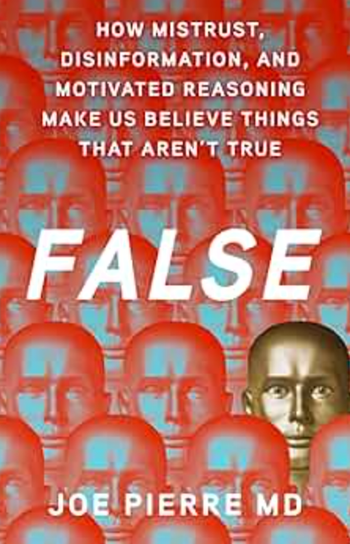
A History of the Human Brain From the Sea Sponge to CRISPR, How Our Brain Evolved
How did we become what we are and where on earth are we headed?
BOOK REVIEW
by Bret Stetka; Portland: Timber Press, 2021
272 pages • $24.95 (hardcover)
Reviewed by Lloyd I Sederer, MD
When the fireball of planet Earth cooled, some 4 billion years ago, land (rock) and water (seas) remained. But no life. Yet, our planet was endowed with the climate and chemicals needed to germinate proto-RNA and DNA. Which, in (lots) of time, fashioned the molecules essential for the creation of life, at first free-floating, then enveloping themselves with permeable perimeters to become single cells, then becoming multicellular organisms, and so forth.
It is an incredible story. Treat yourself to reading this book, and its extraordinary depiction of the human brain’s evolution so far—and where we might be going.
After these not-at-all modest beginnings, Stetka keeps us marching ahead in time: He vividly portrays life’s wondrous journey from our likely common progenitor, the sea sponge (titular for him), to the abundance of life we see today. His “time-travel” depicts, through elegant science reporting and great storytelling, for example, how this improbable organism, without organs or nervous system, launched us. A “tortured {evolutionary} mess” ensued, which spawned plant and animal phyla, from which we all are descendants. We have in
Our guide and narrator, understandably, is particularly fascinated by what he calls, “Upright Citizens,” particularly chimpanzees, bonobos, apes, and humans (all members of the Family of Hominids). I had no idea how I, too, would become enraptured by this odd lot of fellow creatures (and even more enraptured by human evolution) until I read Stetka’s tales. It has been said that a great book cannot be great due to its subject alone; the writer, as well, must be passionate about their subject and infect the reader with that same ardor. Stetka is a keen observer and raconteur. This book, his first, is replete with bon mots, phrases, wise asides, and a sprinkling of irony and humor, which make you want to turn to the individual beside you (in my case, my wife) and say, I gotta read you this! That is what awaits you in 229 pages (plus notes, bibliography, and index)—lest you think this book is a door stopper of 1000 pages!
Bret Stetka is a nonpracticing physician; a science writer who frequently contributes to Scientific American and NPR, and whose work has appeared in The Atlantic, WIRED, and Slate, among other publications.
His scope in A History of The Brain is massive, including self-awareness, community, violence, attachment, empathy, problem-solving, birth and death (including grief), tools, sex, genetics, neuroscience, competition, language, the ceremony and ritual (thus spirituality and religion) integral to creating society and culture, symbolic cognition (at the root of creativity), mental disorders, and the awesome and fearful germ-line editing and engineering that CRISPR-Cas9 has introduced.
How did we become “us”? What were the unique and the universal steps along the way? Where on earth are we headed? Crack open this book and take a read. You will be transported, illuminated, and delighted.
An
Dr Sederer is a psychiatrist, public health doctor, and medical journalist. He is Adjunct Professor at the Columbia/Mailman School of Public Health. The author's latest book (#13) is Ink-Stained For Life.
Newsletter
Receive trusted psychiatric news, expert analysis, and clinical insights — subscribe today to support your practice and your patients.















